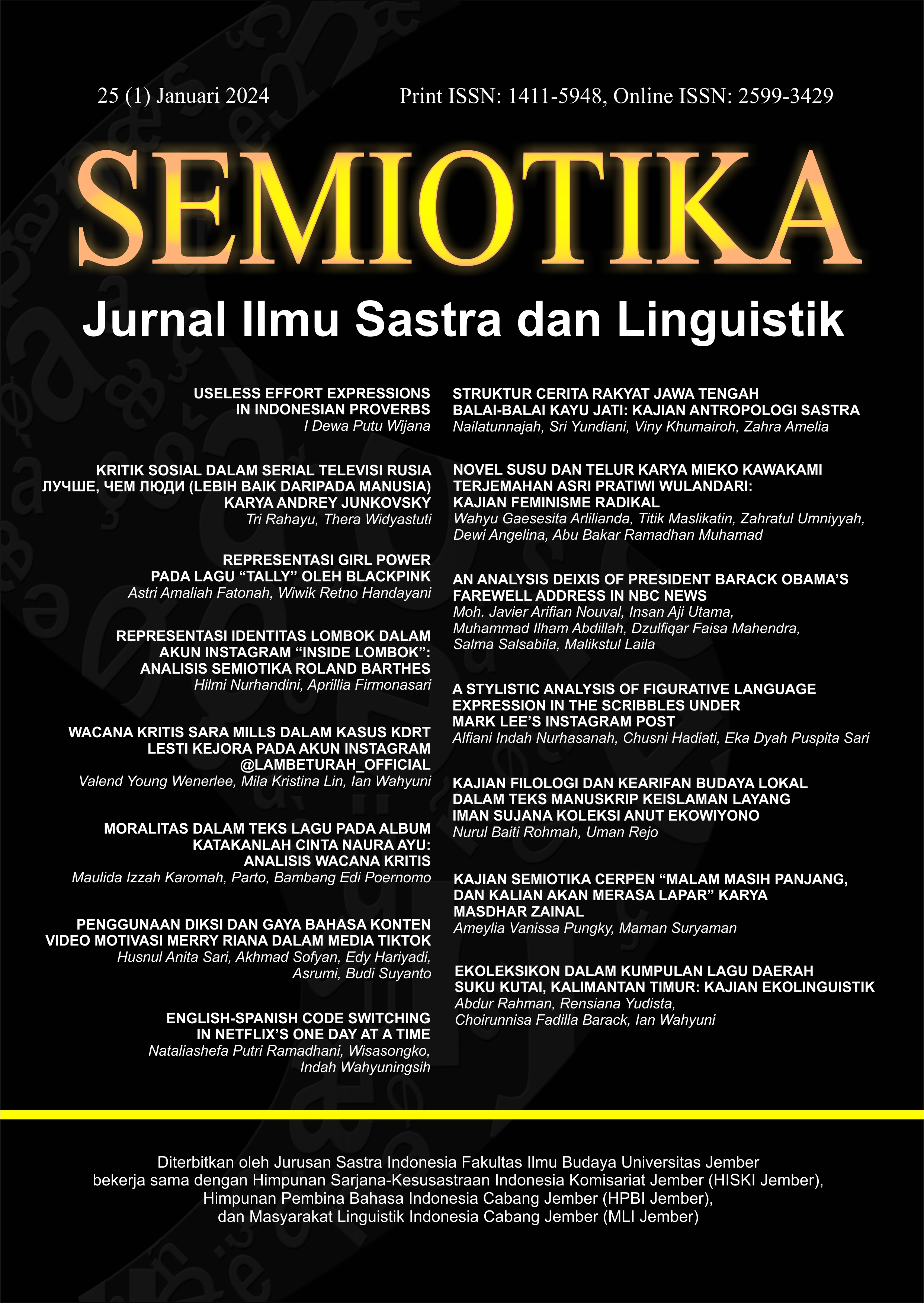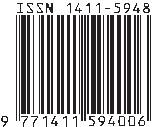A STYLISTIC ANALYSIS OF FIGURATIVE LANGUAGE EXPRESSION IN THE SCRIBBLES UNDER MARK LEE’S INSTAGRAM POST
Abstract
Figurative language is a type of language that cannot be interpreted literally and is used to convey someone's feelings through literary works such as Scribble. This article aims to analyze the types and functions of figurative language from figurative language expressions in Mark Lee's Instagram posts. The research method used is a qualitative method with descriptive analysis. The material object is in the form of five scribbles that Mark Lee shared on his personal Instagram account, while the datum is a line in the data that uses figurative language. To determine the sample, total sampling was chosen. The steps in the data analysis process include data reduction, data visualization, and drawing conclusions. The formal object used is Perrine's theory, to analyze the types and functions of figurative language found. The research findings show that there are seven different types of figurative language in the five graffiti that Mark Lee uploaded on his personal Instagram account, and there are four functions of figurative language found in this research. In short, the dominant type of figurative language found from the data is personification, while the dominant function is to add additional imagery and to increase emotional intensity; both functions are found in equal numbers.
References
Perrine, L., & Arp, T. P. 2010. Sound and Sense: An Introduction to Poetry (Thirteenth Edition). Harcourt, Brace, and World, Inc.
SM Entertainment. 2022. MUSICIAN: MARK. SMTOWN. https://www.smtown.com/artist/10592
Vivien, W. 2021, May 11. NCT’s Mark Lee on Dreams, Instagram Poetry, and Growing Up. Teen Vogue. https://www.teenvogue.com/story/nct-mark-lee-on-dreams-instagram-poetry-and-growing-up-interview

This work is licensed under a Creative Commons Attribution-ShareAlike 4.0 International License.
SEMIOTIKA has CC-BY-SA or an equivalent license as the optimal license for the publication, distribution, use, and reuse of scholarly work. Authors who publish with this journal retain copyright and grant the journal right of first publication with the work simultaneously licensed under a Creative Commons Attribution-ShareAlike 4.0 International License that allows others to share the work with an acknowledgment of the work's authorship and initial publication in this journal.
Attribution-ShareAlike
CC BY-SA










